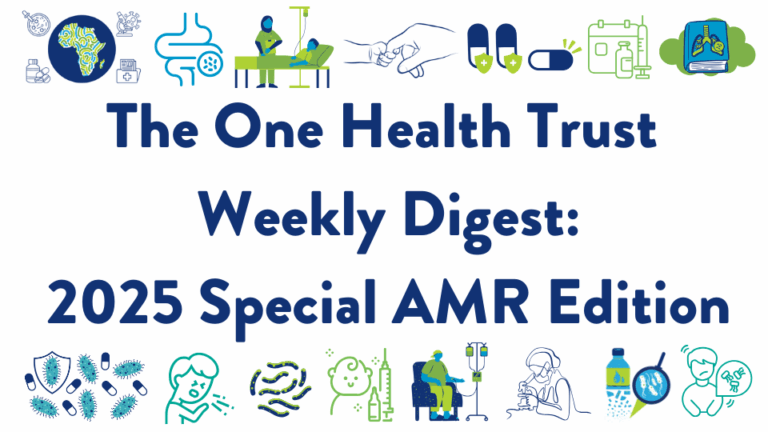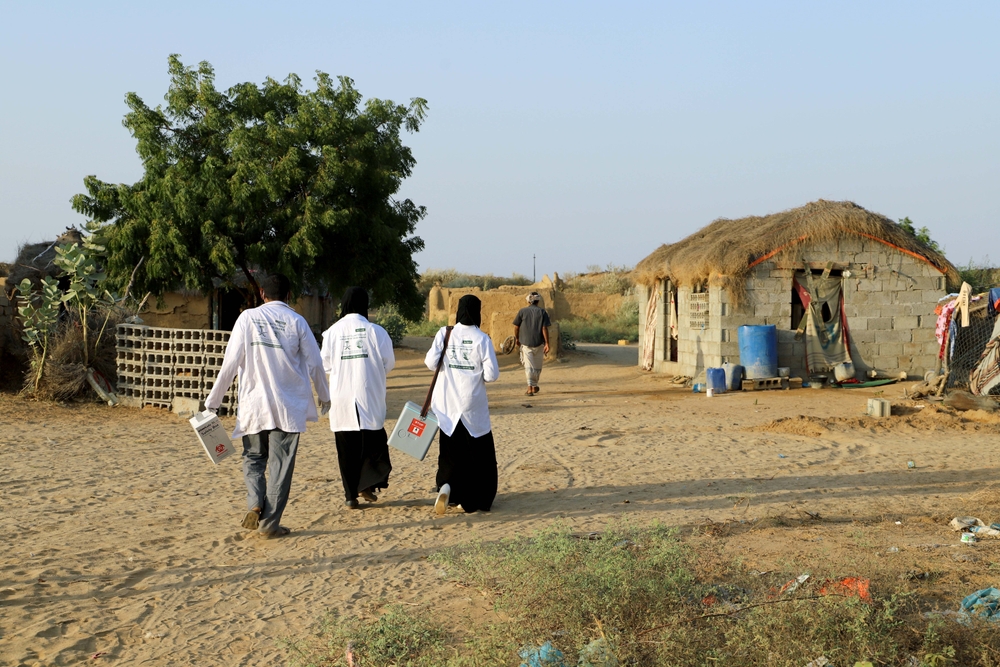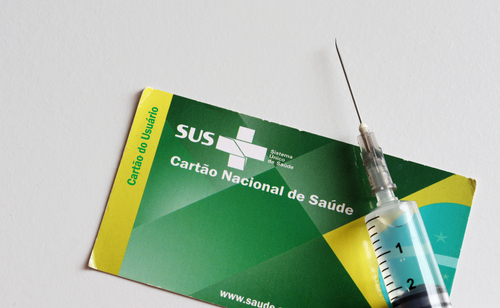June 03, 2024

The role of vaccines in an aging population
Vaccines have emerged as an invaluable tool to promote healthy aging. OHT researcher Dr. Arindam Nandi co-authored an article outlining a strategy to optimize the benefits of vaccination for healthy aging. The strategy consists of three key actions: 1) build on existing knowledge and technologies; 2) increase research and development of new vaccines; and 3) improve uptake of existing and new vaccines. [Science Translational Medicine]
Deaths due to AMR in LMICS could be cut by 750,000 per year with preventive measures.
In the Guardian, the 2024 The Lancet Series on Antimicrobial Resistance, written by experts brought together by the One Health Trust’s Dr. Ramanan Laxminarayan, shows how better access to clean water, sanitation, infection control, and vaccination could prevent 750,000 annual deaths linked to drug-resistant pathogens. AMR kills more people than HIV, malaria, and tuberculosis combined, with low- and middle-income countries (LMICs) most affected. Key interventions, including improved sanitation and vaccines, could reduce AMR deaths by 18 percent (750,000) per year in LMICs. The study proposes global targets, titled “10-20-30 by 2030”, with the goals of a 10 percent reduction in deaths from AMR relative to 2019, a 20 percent reduction in inappropriate human antibiotic use, and a 30 percent reduction in inappropriate animal antibiotic use. [The Guardian]
Impact of temperature and humidity on mosquito abundance in Pakistan
A recent study from Pakistan used molecular genetics technology to investigate the abundance of Plasmodium spp. – mosquito-borne protozoan parasites responsible for malaria in humans – in regions with varying climatic factors. As the average temperature increased, the abundance of mosquitoes decreased, likely due to higher metabolic rates and lower respiration rates. More than 40 percent of female Anopheles mosquitoes in the study areas tested positive for the malaria parasite species Plasmodium, with the majority being Plasmodium vivax (78.1 percent). [Nature Scientific Reports]
Prediction models for post-discharge mortality among under-five children with suspected sepsis in Uganda
Researchers used data from prospective cohort studies of children in six Ugandan hospitals to inform prediction models for post-discharge mortality among under-five-year-old children with suspected sepsis. Models for the two selected age groups (0-6 months and 6-60 months of age) performed well at predicting mortality up to six months post-discharge, indicating their potential utility to identify individual risk factors and inform post-discharge care. [PLOS Global Public Health]
Catastrophic costs associated with TB care in India.
India faces the greatest burden of tuberculosis (TB) in the world, with a reported incidence of 1.93 million cases in 2021. A cohort study of 1,482 patients with drug-susceptible TB in 4 states in India found that 30 to 61 percent of participants faced catastrophic costs (out-of-pocket expenses above 20 percent of annual household income), depending on the calculation method. The delay from the onset of symptoms to the initiation of treatment – something that can be addressed through community awareness campaigns to promote early symptom detection – was identified as a key driver of catastrophic costs. [PLOS Global Public Health]
Importance of genomic surveillance of priority pathogens
Genomic surveillance of pathogens can be critical in containing and mitigating threats from infectious diseases and AMR. Building on infrastructure established to monitor SARS-CoV-2 variants throughout the COVID-19 pandemic, One Health genomic surveillance must incorporate collaboration and knowledge-sharing practices across sectors and healthcare facilities. In addition to funding to expand laboratory capacity, action is needed to standardize nomenclature and methods worldwide to support effective pandemic preparedness through pathogen genomics. [Frontiers in Science]
Expansions in universal health coverage and infant mortality in LMICs
A retrospective analysis of data from demographic and health surveys found that increases in universal health coverage (UHC) in low- and middle-income countries (LMICs) averted approximately 15.5 million infant deaths between 2000 and 2019. The study found that a 1 unit increase in the UHC index was associated with a 1.2 percent reduction in the risk of infant death. However, higher wealth quintiles saw greater reductions in infant mortality due to UHC than lower quintiles. The greatest reduction in infant mortality in poorer populations was observed in the early stages of UHC expansion. [The Lancet Global Health]
Characterizing carbapenem-resistant bacteria in the southwest Amazon region
An analysis of clinical isolates of carbapenem-resistant bacteria collected in Rondônia, Brazil, revealed a 407.39 percent increase in meropenem resistance in Escherichia coli and a 108.73 percent increase in Klebsiella pneumoniae between 2018 and 2021, both considered as bacterial priority pathogens. A 30 percent reduction in bacterial biodiversity during the study period was attributed to COVID-related shifts in priority healthcare services. [Nature Scientific Reports]
Risk factors for the circulation of Crimean-Congo hemorrhagic fever in Tunisia
A recent review into the circulation of Crimean-Congo hemorrhagic fever (CCHF) virus in Tunisia underscores the risk associated with illegal livestock and wildlife trade between neighboring countries, uncontrolled household waste deposits, and anthropogenic activity related to livestock sacrifice during the religious event Eid al-Adha. A One Health approach is critical to mitigating CCHF – particularly for individuals at high risk such as slaughterhouse workers – and balancing the needs of humans, animals, and ecosystems. [IJID One Health]
Call for a One Health approach to soil-transmitted helminths infection control in endemic areas
Soil-transmitted helminths (STHs) pose a substantial burden globally, with over two billion people estimated to have been infected with at least one STH species during their lifetime. Despite the current practice of preventive deworming in endemic areas, infections still occur. A horizontally integrated, One Health approach that involves local communities and promotes community awareness of hygiene and sanitation could more effectively and sustainably reduce the burden of STHs in endemic areas. [IJID One Health]
Plastic surfaces in wastewater are not hotspots for AMR spread.
An experimental study revealed that the composition of microbial communities colonizing plastics consecutively incubated in wastewater effluent, river water, estuarine water, and seawater shifted from microorganisms associated with wastewater effluent to marine taxa. Notably, while antibiotic resistance genes (ARGs) persisted on plastic surfaces, their abundance did not increase over time, indicating that plastic surfaces submerged in wastewater were not hotspots for antimicrobial resistance proliferation in laboratory marine environments. [Environmental Microbiome]
Image from Shutterstock











